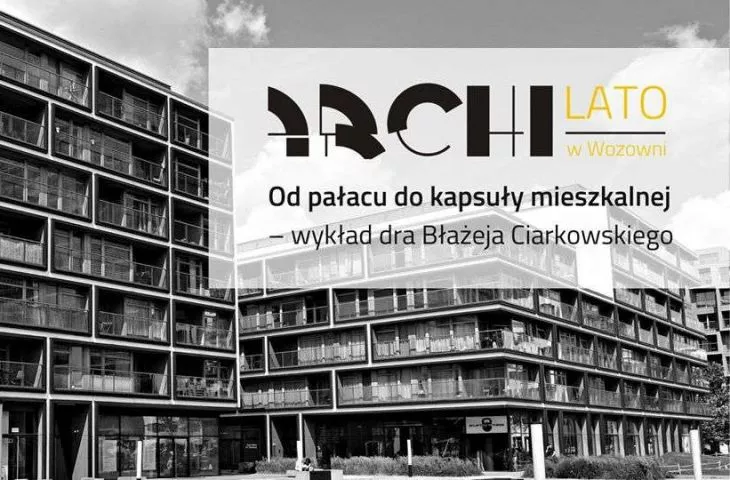This coming Tuesday, August 11, at 6:30 pm, another online meeting will take place as part of the ArchiLATO series at the Carriage House. Błażej Ciarkowski will talk about how people used to live and how they live today in the lecture: "From palace to residential capsule: transformations of multifamily housing from metropolitan rental tenements to futuristic micro-housing."
Starting on the last Tuesday of July, every two weeks there will be an opportunity to meet online with female and male architecture researchers, who will introduce selected issues they deal with in an interesting, non-academic format. As part of ArchiLATA at the Carriage House, we will look at the assumptions of selected trends and trace the evolution of selected architectural concepts. There will also be regional references to the construction of cities such as Toruń and Bydgoszcz.
from palace to residential capsule
The covid-19 pandemic has significantly affected our daily lives. The need to maintain "social distance", the transfer of activities previously reserved for the office or school into the confines of our own four walls has prompted architects to discuss the space in which we live. What are our apartments like? What is the future of multifamily housing? Will they be, as some want, multifunctional micro-apartments, or will we return to the traditional layout with clearly separated day and night zones?
The lecture "From the palace to the residential capsule" will present the path that our residential environment has traveled from the mid-19th century to the present day, and outline the possibilities for future transformations
photo by Blazej Ciarkowski
In order to outline a forecast for the future, it is first necessary to reach back into history. The beginning of the journey through the successive stages of the transformation of "housing" is the 19th century metropolitan tenement houses. Magnificent, richly decorated front buildings and much more modest outbuildings crowded around courtyard-studios became one of the causes of the modernist "revolution" in architecture. Fascinated by modernity, designers of the 1920s rejected previous solutions. Instead of townhouses, they proposed "blocks in the sun" erected among greenery. They contrasted poorly lit rooms in outbuildings and basements with bright and sunny apartments in blocks of apartments.
Subsequent concepts for a new arrangement of the residential environment led to increasingly fantastic versions of the "living machine": buildings consisting of interchangeable capsules, visions of "mobile cities" or neighborhood megastructures. With the presumed end of modernism, designers sought to return to traditional solutions. At the same time, the creators of modern multifamily buildings are taking full advantage of what Le Corbusier or Mies van der Rohe developed several decades ago.
The lecture, "From Palace to Residential Capsule," will present the path that our residential environment has traveled from the mid-19th century to the present day, and outline the possibilities for future transformations.

















